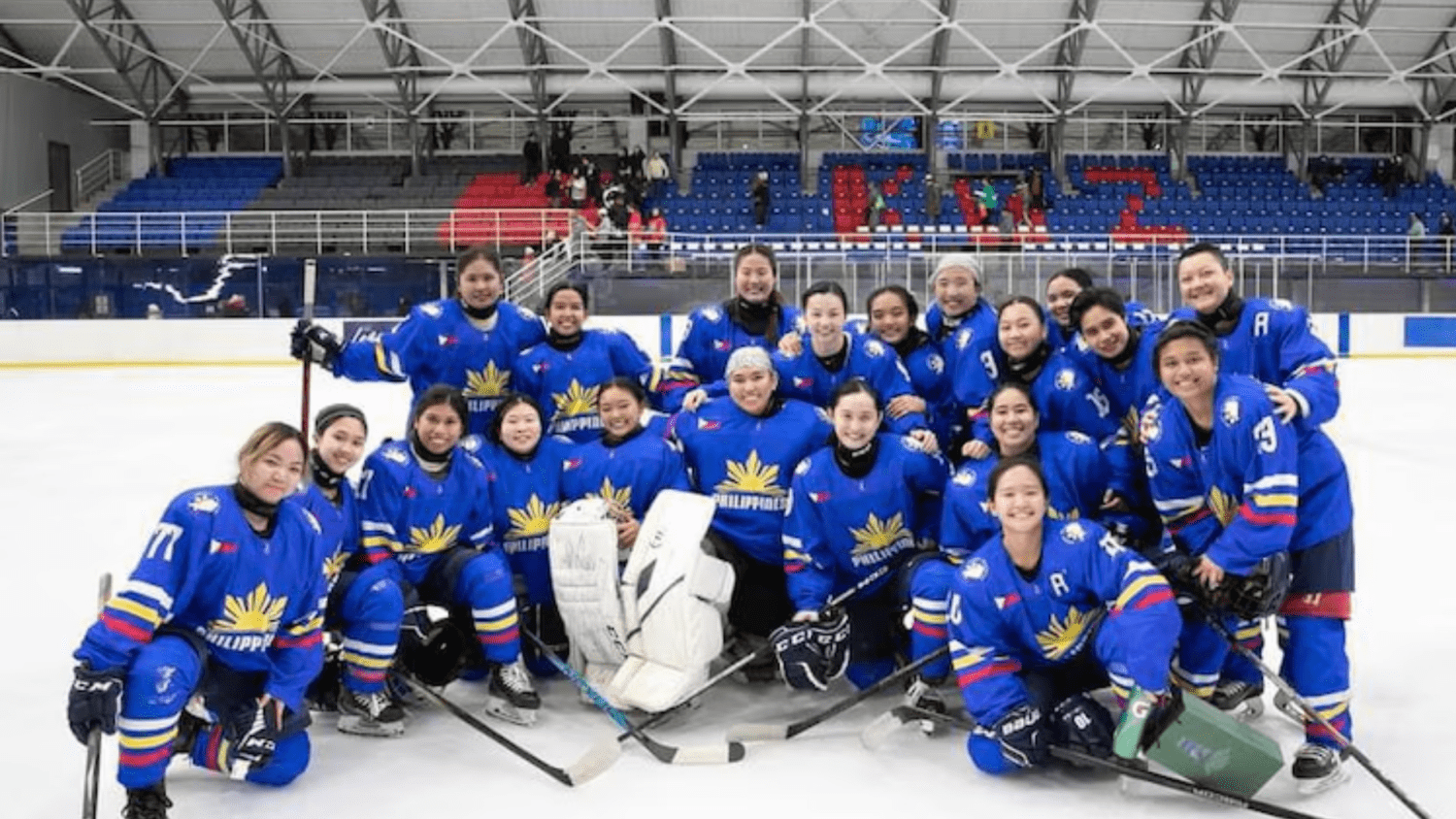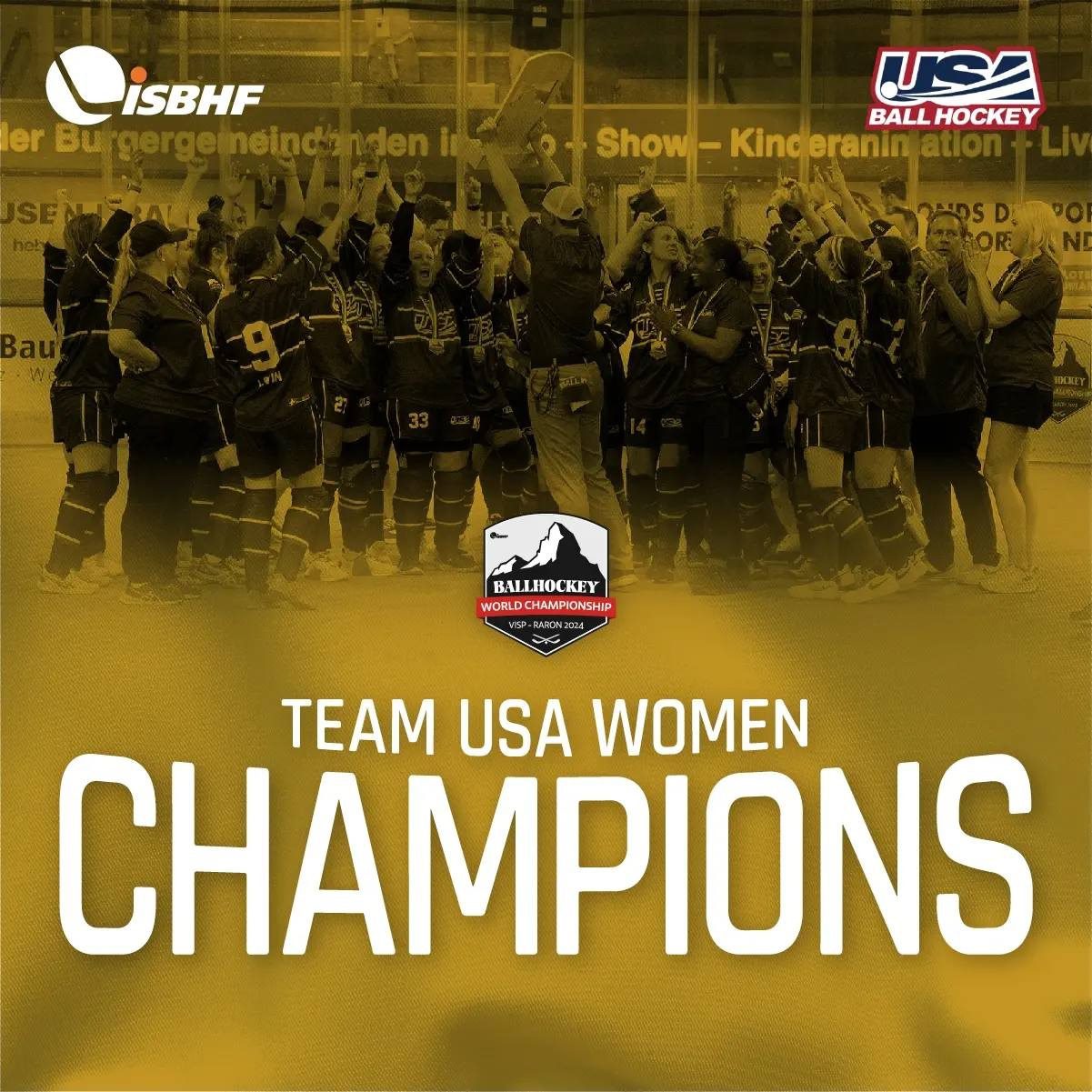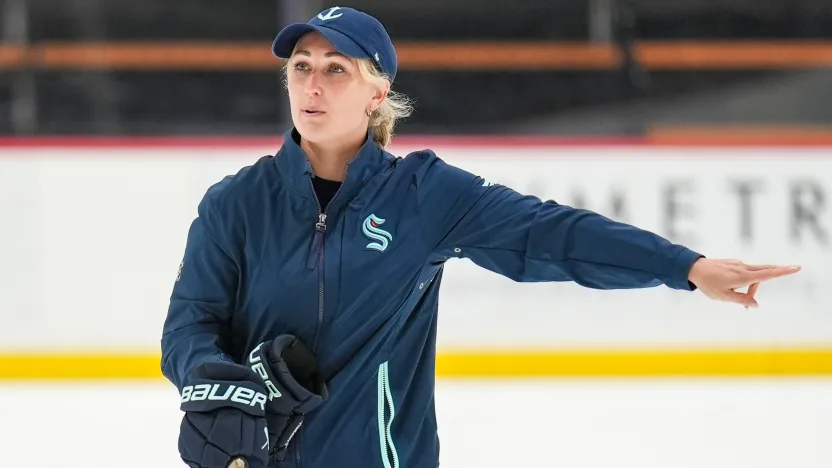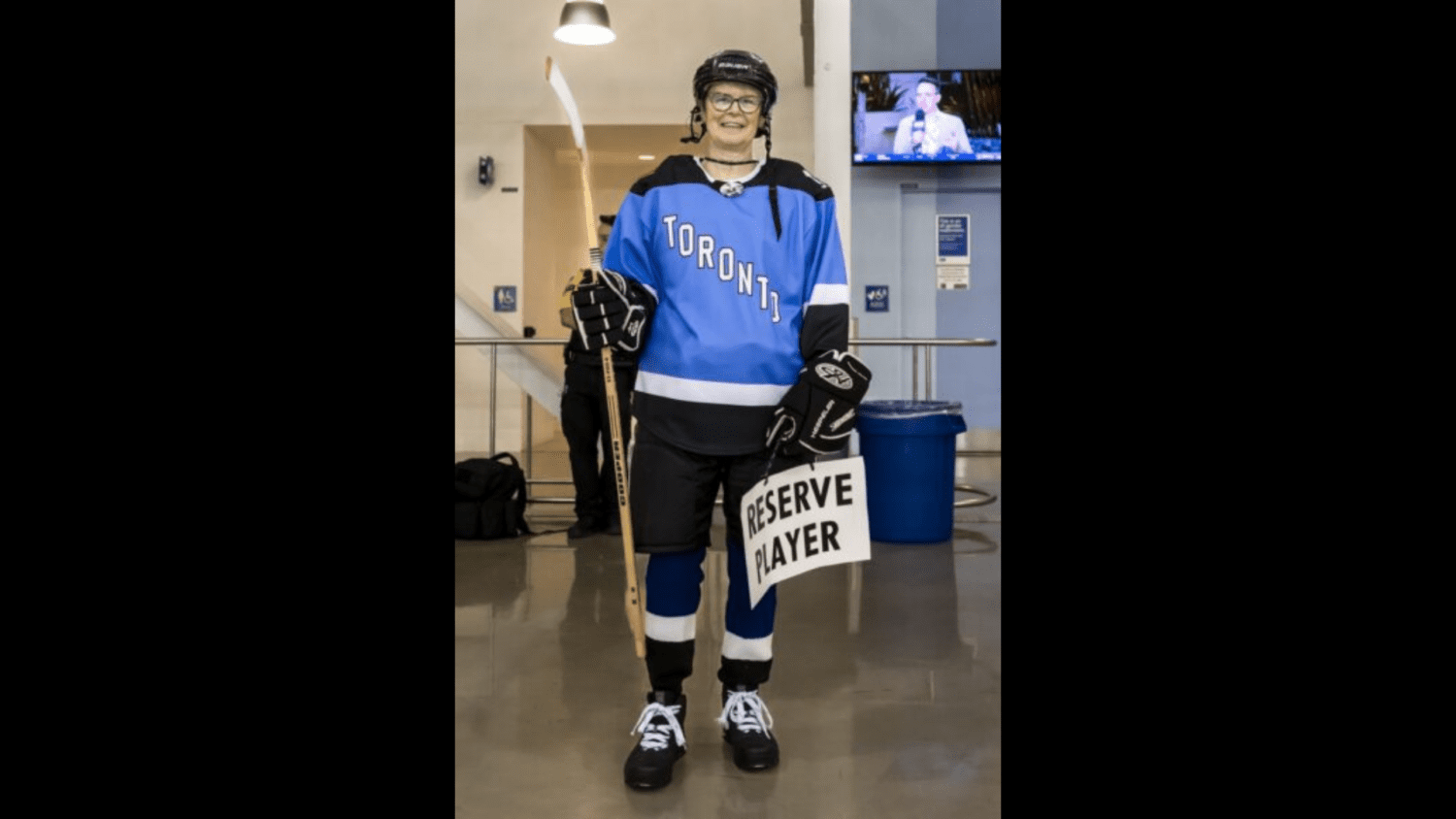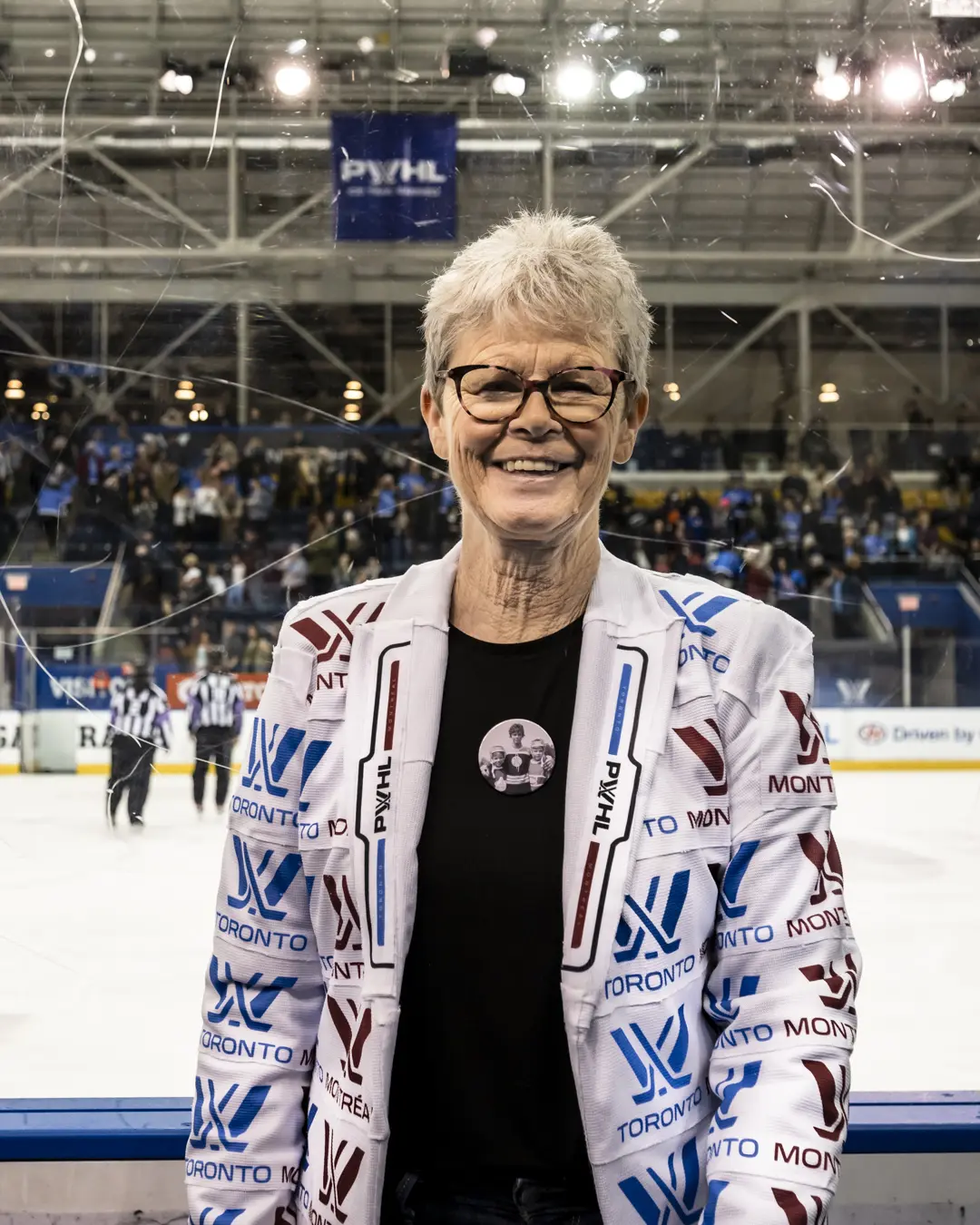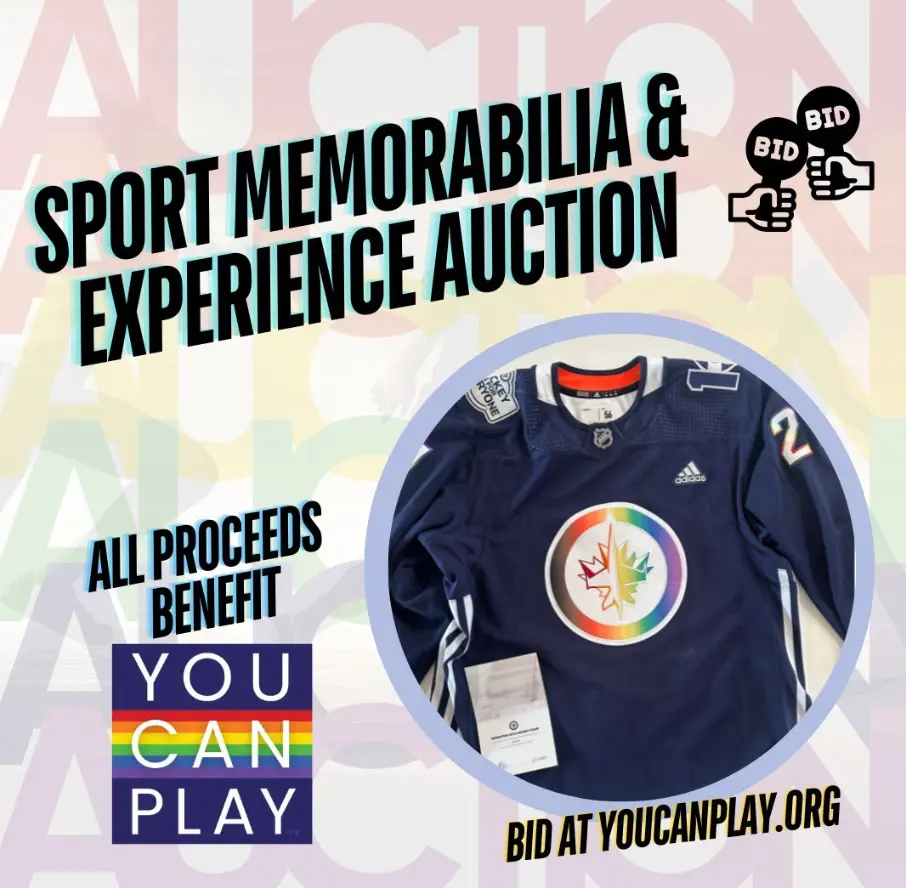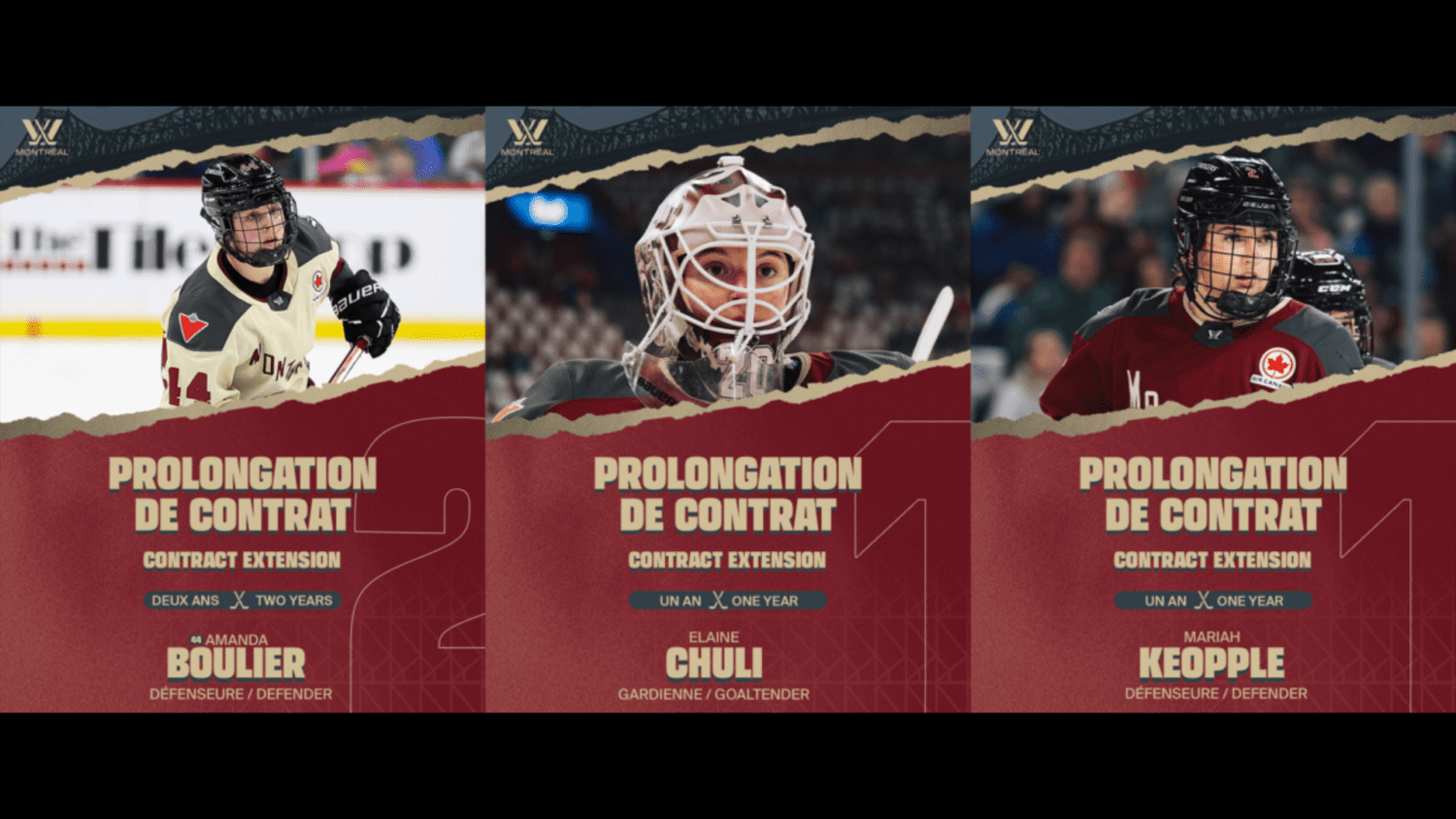It was unforgettable. Three months ago, goalie Noora Raty heroically backstopped Finland to an historic silver medal at the 2019 IIHF Women’s World Championship in her native Espoo. Her team upset Canada 4-2 in the semi-finals and lost 2-1 to the defending champion U.S. in the gold medal game shootout after Petra Nieminen’s overtime goal was controversially overturned by the video judge.
However, Raty isn’t lamenting the missed opportunity. This off-season, the four-time Olympian is logging close to 40 hours a week as a goalie coach with MEGA Goaltending in Minneapolis, where she resides. At 30, Raty, named to the all-star team at five Women’s Worlds and the 2018 Olympics, is coming to an important crossroads in her career.
In 2018-19, this fiery superstar played for the second consecutive season in China with Shenzhen KRS Vanke Rays, posting a 2.46 GAA and .921 save percentage in the now-defunct CWHL. This year, she got engaged to longtime boyfriend and fellow goalie coach Karel Popper and purchased a home. And as part of the #ForTheGame movement, Raty has joined the nine-member board of the Professional Women’s Hockey Players Association (PWHPA), along with other elite talents like Hilary Knight, Kendall Coyne Schofield, and Shannon Szabados.
We chatted with Raty shortly before her fourth annual KRJ Skills Camp for girls (July 8-12) at the University of Minnesota with U.S. sniper Amanda Kessel and retired Finnish teammate Mira Jalosuo. Raty offered her opinions on the state of Finnish women’s hockey and the future of the game.
First, let’s put things in perspective. How much has life changed for the Finnish national team since you originally announced at the 2014 Olympics that you’d step away from women’s hockey to compete against men?
I think it’s totally different. I mean, I think most of us were actually paying to play, and now we’ve gotten to the point where probably over half of us are getting paid to play or at least expenses are covered. Plus you have Olympic federation support, where most of us get 10K [Euros] a year from the Ministry and the Olympic federation, which is huge for us.
So we’ve gone from most of the team studying or working full-time and then training full-time too to either not doing anything else but playing or just having a part-time job. We’re a lot more professional than we used to be even five years ago.
After the Women’s Worlds, the Naisleijonat received a gold-medal bonus (7,000 Euros) instead of silver (5,000 Euros) from the Finnish Ice Hockey Association. How did you feel about that?
Well, I kind of had mixed feelings, because I’m like, I don’t need people’s pity, or patting me on the back about how we should have won. Because that just makes me mad. Somehow, we didn’t deserve to win. There’s hockey gods, and they had a different plan for us than gold, I guess. So I accepted when it’s over and put my eyes on the future and thought that if it’s meant to be, it’s meant to be.
Let’s say, if I was an NHL player making millions, I probably would have declined the extra money. But it was a nice gesture from them. At the same time, I don’t want people to feel bad for us for what happened.
How would you assess the impact your team made in this home-ice tournament?
We had about 2.5 million people watching the final game in Finland itself, which is half our population, and probably more people are on one TV. So the number’s even bigger. It was really cool with the hype and energy we were able to create. The crowd at the final was unbelievable. I don’t think I’ve ever experienced anything like that.
Do you think there’s an ongoing ripple effect from the success of other women’s sports events, like the FIFA Women’s World Cup?
Yeah, for sure. At this point, any female sport that can get people attracted to it or get the fans going, I think it’s huge. It’s not just our sport that’s struggling to get acceptance and viewership. I think FIFA has been huge, especially in the U.S. It’s unbelievable how many people follow Team USA.
Meanwhile, how do you feel about your role with the PWHPA?
Things are starting to look pretty good. I’m just excited for the future. Obviously there are a lot of moving parts and a lot of things you can’t say in public yet. But based on what I know, I would be really excited for the future even if this season might be kind of, as we call it, a hybrid year where players that are part of the association are not going to be part of any leagues [in North America].
We’ll be creating some exciting events for the fans to be part of and to see what the game could be at its best. So I’m really excited to be part of the association.
Have you decided whether you’ll play in China for the third straight year?
I have an offer from there. But I haven’t accepted it yet, just because they’re going from the Canadian league to the Russian league. So there are a lot of question marks for me that I want answers for before I sign a deal and set up my life for four months in Russia and four months in China. Now with me getting married and being 30 years old, I don’t know if that would be the best fit for me at this point of my life. I want all my questions answered before I sign anything.
You played five games in Russia in 2013-14 with SKIF Nizhny Novgorod. Looking back, what was that like?
Well, let’s say it was pretty Wild West! It’s not something that a person from Western culture is used to. They have their own style to take care of things. Obviously, with democracy, it’s not a very democratic country. They have their own way of figuring out things, and let’s just say you need a lot of patience in that country. But I’ve heard that it’s come a long way from when I played there, and I know there are some really talented players. I think the league will be really good for Team China, but I have my concerns with travel and safety and food and stuff like that.
How do you feel about the players who have opted to sign with NWHL clubs?
That’s their own decision, and we try to keep everyone as informed as we can. Some players might think they don’t have enough information. If they need the extra money, then why not sign with the NWHL and try to get some money out of it? Even if there’s not a lot of it involved. But I know for a lot of them who signed with the league, it’s a financial decision.
I think in the big picture, it would be huge for us players just sticking together and then seeing what happens in the future. But I’m not gonna say bad things about players who signed, because it’s totally on each player whether or not they want to play in the league or not.
How often have you been asked to join the NWHL?
I’ve been asked to play there probably every season, but for me, not being from the USA, I would need a visa and also health insurance. And yeah, I think I could get a visa easily because I have one right now. But for me, I would never play in the league without health insurance. And you actually sign a clause on the contract with the league that you agree to kind of take liability for all the insurance and show your own insurance and so on. For me, it would just be a huge health risk to be associated with the league.
To be honest, I think my value and my brand is worth a lot more than 2K or 3K a season. With China being around, the league just wouldn’t make any sense for me.
And also, I’m having trouble with this: if you want to call yourself a professional league, I think you need to have more than one or two practices a week and 16 games. Now when you practice every day and have a 40-plus-game schedule, then you can actually call yourself a professional league.
Players need to be making a living salary, where they don’t have another full-time job. Because right now, for players in the NWHL, it’s their part-time side gig. I think to call yourself a professional hockey player, you actually need to be making a living out of playing. That’s my opinion.
Is it fair to say that we still haven’t scraped the surface in terms of how good professional women’s hockey could be?
For sure. You always had the Canadian league and the NWHL going against each other with different business models. You had the best Canadian players in Canada and the best American players in the USA and the best Europeans in Europe. But you can just imagine how good the game could be if you got all those players in the same league. So I guess that’s about almost 200 players that are in the pool.
I think fans can’t even imagine how good the game could be. I think every game could be like the Olympic final.
If you were in charge, how many WNHL teams would there be?
I would probably start with a minimum of six, kind of like the NHL with the Original Six. And then do market research to see if there’s more interest. But we don’t want to start too small or too big. I think probably three teams in Canada and three in the U.S. would be a good start, and then go from there.
I mean, if you look at it as six teams with 20 players on each roster, that’s only 120 spots. But if there’s a women’s NHL, it’s the best of the best who are going to make the teams, and the rest, it’s a rough world in sports. On the men’s side, you can’t just say you want to play in the NHL. You actually have to earn your spot. That’s what I like. It’s the competition too.
What do you think about the scrutiny that a WNHL would come under?
With the hybrid year and the best players in the world taking a year off, people’s eyes are going to be on us, and there’s also going to be a lot of doubters and people who hope that we won’t succeed: “You guys don’t have a future.” So we definitely want to prove people wrong too. Those are the people we don’t even want watching our sport. We know there’s an audience and a fan base just waiting for us to put a good product out there.
A lot of people hope you’ll be part of that next league.
Yeah, for sure. At least I want to be able to be part of creating the league. If I’m going to play in it or not, I’ll decide later, because it all depends what season and what year it’s going to start. Who knows where my life is at once we get it started? If I’m healthy and still have years left, I for sure want to play in it for a couple years, a year or two.
When you played in your first Olympics in 2006, Instagram and Twitter didn’t exist. How has social media affected women’s hockey?
What’s huge for us is that with social media – building our brand value with our social media posts — we can actually take advantage of it to make some side money too and promote the sport through that channel. Before, we didn’t have that channel to express ourselves. So I think people have learned from that how women’s hockey is changing. Even if it’s slow, it’s getting there.
You, Annina Rajahuhta, and Ronja Savolainen signed on last year to endorse Lunette, a Finnish menstrual cup company. Founder Heli Kurjanen and COO Sonja Karjalainen arranged to promote their products at Women’s Worlds games in Espoo. What do you like about working with them? And for you, why is it important to open up the conversation about menstruation?
I think they’re just really positive people. Whenever they came to watch our games and whenever we had our meetings, they were just super-happy and brought lots of positive energy. They’re really outgoing, open people. With the product they have, that’s kind of what you need to be. And of course, I like the fact that the company was created by a female and they’re actually really successful. So I’m very happy for those two. Fifty percent of the population on earth is female. There are a lot of people that have periods, and I think the more we talk about it, the better.
[adrotate group=”1″]
Related Articles
Categories
Recent Posts
[adrotate group=”2″]




